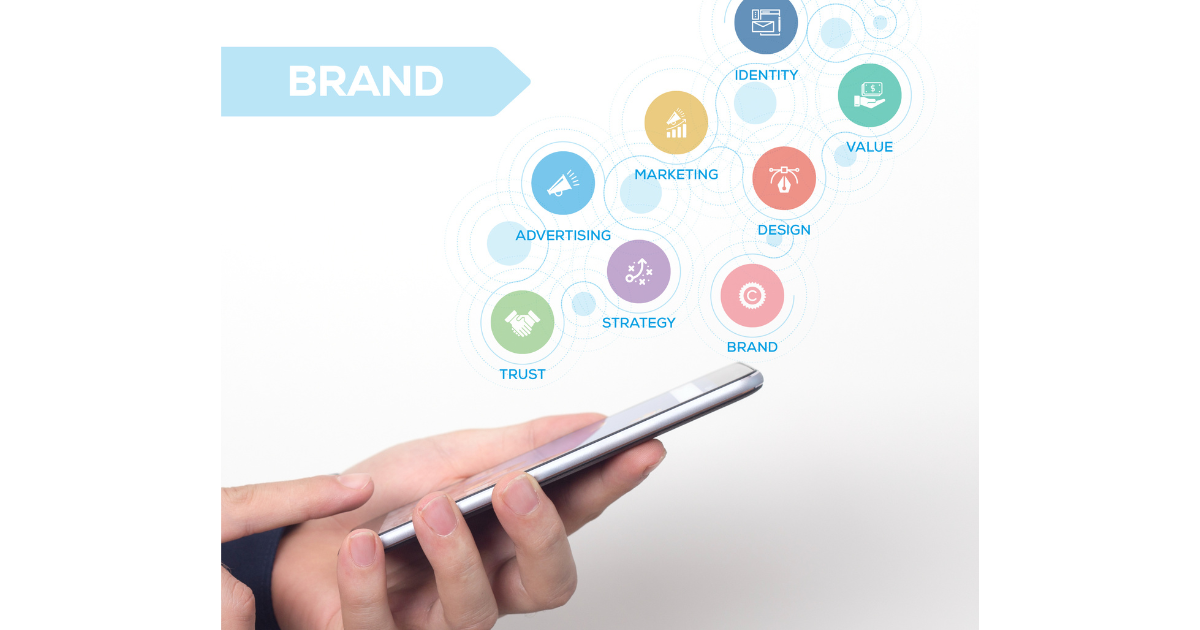What Branding Elements Should You Monitor For A More Established Business Identity?
What are the branding elements of an effective marketing strategy?
An effective marketing strategy will have a key brand element, which should be monitored to create a more established business identity. These brand elements include visual and written asset management brands, brand equity, brand vision, brand values, brand persona, and target audience. Each of these components is important for creating a well-rounded and successful marketing strategy.
An effective marketing strategy requires much research, and one key component is understanding your target market. Through market analysis, you can determine how many people fit into your target market and if there is a need for your product or service. Once you have this information, it’s important to define the key aspects of branding your business. This will help the team carry out their day-to-day duties with greater clarity and cohesion. By defining the key elements of a brand strategy before going into development, you can ensure that design and marketing work with developers for a cohesive experience. This will create a stronger brand identity for your business.
How do you define your brand elements?

When it comes to branding, there are a lot of different definitions and elements that can be included. However, at its core, a brand is:
- A symbol that represents deep emotional ties.
- A brand can be defined as the sum of memories, stories, and expectations surrounding a product or service.
- A brand is a product’s personality and human experience.
- A brand plays an important role in marketing, with customer service, price, product quality, and corporate responsibility also playing a part.
Different aspects of branding can be defined by different terms that help simplify choice for the consumer (identifier, sign, symbol, design term). But at its heart, a brand is always about creating connections with customers on an emotional level.
Logo
Your logo is the single most important element of your brand identity. It should be simple and visually attractive, last a long time, not be trendy, and meet industry standards.
A good logo should communicate your personality and values. Play around with your design team’s ideas to get the most out of your branding efforts.
Color palette
The colors a brand uses can significantly impact how customers perceive the company. To create a successful marketing strategy, selecting the right colors for your logo, websites, and advertisements is important.
There are several things you need to consider when selecting colors:
- What is the brand’s personality?
- What does the company want to communicate to its target customers?
- Which colors will be most effective in standing out from competitors?
Once you’ve answered these questions, you can begin selecting colors for your palette.
Your base color should reflect your brand’s personality and be used as the majority color in your scheme.
Your accent color will be used more often than the base color after that time. A monochromatic color scheme is a safe choice for brands with one main focus. Analogous colors are also a good option but not as bold as monochromatic colors. Complementary color schemes are great because they bring out the best results with opposite colors. Triadic color schemes pull three-wheel sections, creating a stable and refreshing effect.
It’s important to pick colors that correspond to your brand personality traits and target customers.
Once you’ve selected your colors, it’s important to use them in a balanced way. This means using your base color, accent color, and neutral colors in the right proportions. The base color should be the most important and used as the majority color in your scheme. The accent color will be used more often than the base color. A monochromatic color scheme is a safe choice for brands with one main focus. Analogous colors are also a good option but not as bold as monochromatic colors. Complementary color schemes are great because they bring out the best results with opposite colors. Triadic color schemes pull three-wheel sections, creating a stable and stimulating effect.
Corporate font
When designing a brand identity, it’s necessary to look for complementary typefaces that can complement the logo design. A corporate font should be easy to read and have a modern feel. It is important to use fonts available for both PCs and Macs to create all marketing materials in-house easily.
Style consistency
It is important to maintain style consistency across all brand elements to create a cohesive and recognizable marketing strategy. This includes photos, illustrations, line art, colors, and emotions.
Photos should be high quality with a perceptive color palette and crisp detail. Illustrations can be used in place of photos as they provide a more whimsical or playful view of the marketed product or service. They also have the advantage of being less expensive than traditional photography.
Line art provides a simplified view of the marketed product or service and can be used as an introduction for potential customers unfamiliar with your business.
Your two to three main colors should represent your brand, and one to two accent colors should be used for emphasis. Be sure that all colors are complementary so that they work together harmoniously.
Your emotions should be chosen based on how you want your business to reflect that emotion in its marketing materials. Creative agencies may use different shades or tints of the same color to adjust the emotions they represent.
Choosing colors is simple with MotoCMS’ six-step infographic, which considers everything from moods to meanings behind certain hues.
Tag lines
A tagline is a short, memorable phrase associated with a brand. Taglines are often used in marketing to create an identity for the brand and to differentiate it from others. Some famous examples include:
- “Just Do It” by Nike
- “Think Different” by Apple
- “Eat Fresh” by Subway
Taglines can be very successful if they are catchy and descriptive. They help people remember the brand, which is key for marketing purposes. However, it’s important to ensure that the tagline isn’t too obvious or generic-sounding. That’s why abstract offers sometimes work better than straightforward ones.
Other visual elements
In addition to the graphical element, other visual elements are crucial to branding. For example, consider the dynamic ribbon on a Coca-Cola can or the flower pattern used by Coach. These help in branding your business without relying on words.
Visuals are also an important part of marketing strategy. Recent studies have shown that consumers are seeking validation and will react positively to visual images. For example, when Nike released its “Just do it” campaign, it saw an increase in sales and successful brand awareness.
To sum up, using clear and strong visual elements – like a logo, typography, imagery, or color scheme – can be extremely helpful in capturing users’ attention and building awareness for your business.
How can business owners ensure their branding is effective?
Branding is one of the most important aspects of any business. It is how customers and potential customers identify a company and its products or services. Branding can be impacted by many different factors, including, but not limited to, the brand name, logo, colors, typeface, website design, marketing campaigns, and even the language used on social media platforms. Business owners should constantly monitor their brand elements to ensure they effectively and accurately reflect the company’s identity and goals.
Business owners must ask the right questions to craft a strong branding strategy. What are your company’s core values? What is your mission statement? What are the demographics of your target audience? Once you have answers to these questions, you can begin formulating a plan to help you create an effective and lasting branding strategy.
Why are brand elements important?
Brand identity elements can give a brand an appropriate look and feel. Branding is using these elements to create a deep connection with customers. This helps businesses achieve their ultimate goal, which is to increase profits. When it comes to branding, many people immediately think about the brand name, logos, and colors. However, other visual identity elements help make brands recognizable on social media platforms like Instagram or Twitter. For businesses to succeed, they need to have a strong branding strategy. Branding also helps employees feel more motivated to work at the company.
Why is it important to monitor branding elements?
Every marketer should be familiar with core branding elements. Brand name, logos, catchphrases, and colors contribute to a branded product or service. It’s important to know the appropriate tone for content created by your organization so that it resonates with customers in the way desired by your brand identity.
One of the main purposes of branding is to establish a strong business identity. This can be done through various marketing channels, including online and offline spaces. Business owners need to monitor their branding elements closely and ensure their website is free of spammy content.
What are some signs that a business identity is established?

Building a strong market presence for a business requires branding. The company’s products must have an effective and consistent branding strategy to create buzz and stand out from the competition. Establishing a business identity is one of the most important steps to success in the market, as it lays the foundation for all future marketing efforts. A proper brand should include certain core elements that are deemed most important, such as the right color palette and logo design.
Essentially, a business identity is not only established over time but also relies on how well you understand and monitor your core brand identity elements. Many people believe that a business identity is “established” after 3 years of being on the market, but that’s not always the case. This article will explore why every marketer should be well-acquainted with their company’s core branding elements and what to look out for.
It has an easily recognizable logo
A recognizable logo is the first step in establishing a business identity. Logos need to be consistent with all other elements of a brand, as well as the emotional appeal of the brand. The best logos evoke strong emotions.
Simplicity is key, with a playful and creative script being the most effective. The Coca-Cola logo is a single font and has no graphical elements. The brand’s simple logo is easy to scale across mediums. A logo can look great on a billboard or as a tiny social media icon.
A business identity has to be flexible enough to work in different mediums and situations.
It has a mission statement
Using verbs and targets with outcomes is a good method for creating your mission statement. The brand mission is what the business commits to achieving. It should be measurable so that it can be assessed whether or not it has been accomplished. The brand’s mission clarifies how it plans to achieve its vision for the future. Additionally, the brand mission also helps make a statement of what makes the company unique and different from competitors so that it can develop effective brand positioning statements for marketing purposes.
It has a familiar color palette
McDonald’s is known for their extensive use of consistent color schemes throughout all its visual elements, from logos to typography. This consistency immediately helps customers identify the brand and strengthens the brand identity element.
Choosing the right colors for your brand identity components is easier than other design elements because customers will automatically associate certain colors with your brand if you utilize them consistently. When selecting a color palette, it’s important to choose complementary colors that reflect your brand’s attributes. The selection of colors must be cohesive, and the color scheme should largely follow the tone of the business’s logo. Colored materials such as advertisements, designs for website or marketing material, and business cards should be applied to establish a familiar color palette.
A skincare company would likely choose brighter tones than a finance firm or agency with a darker tone. Your business has an established identity as long as the colors are used consistently. The benefits include increased visibility and brand recognition, making your company more recognizable to the public.
It has a well-designed website
A well-designed website is often the first place an audience can understand how a business identity fits into their lives. The website should be visually appealing and functional and offer incentives for the audience to stay longer on the website. It’s also important to provide enough information for the audience to understand and take action. For example, if a business wants people to buy a product, they would need clear images of the product and descriptions and pricing. In addition, brand values may guide how a brand behaves in the market – for instance, whether or not they are willing to give discounts. Brand values are not meant to impress but act as a guiding compass for decisions and actions based on what we hold dear.
The company’s branding is recognizable and differentiated from competitors
A business should always be consistent with its branding strategy. This means using the same colors, logo, slogan, and general image across all mediums. It’s also important to not mimic your competitor’s ideas; rather, find a way to establish your unique identity for the company and its products/services. Nike is the perfect example of how brand identity can be established. They’ve been around for years and continue to grow because they’ve never stopped innovating. Find an interesting slogan and turn it into your motto- this will help establish a brand identity that consumers can remember.
Furthermore, establishing a business identity is usually the result of others’ success. Take Apple, for instance: they created successful products by leveraging design, marketing, and public relations to build a brand that resonates with consumers. And lastly, ensure your brand is loud enough to reach consumers; provide them with an edge over the competition, so they see you as their first choice.
What are the advantages of having branding elements?

Branding elements are important for a company because they help people remember the brand. This can increase brand awareness, create a sense of loyalty, and improve recognition. The main advantage of having branding elements is that they can help create a brand identity.
More people will recognize your business
Visual branding is important for human connection and connecting to audiences. When people see a consistent set of colors, fonts, and shapes across all marketing materials, they will more easily recognize your business. Research shows that up to 80% of consumers purchase because of visual branding.
Furthermore, visual brand elements can evoke emotions in a way text cannot. For example, the bright red color used by Target stores makes customers feel energetic and excited. Typography refers to fonts in all marketing materials, from business cards and brochures to website text. Ensure your font is cohesive with your brand or business- it will help you attract customers and increase revenue!
Branding can help build trust
People are more likely to buy from a company they trust. And branding can help create that trust. The visual elements of branding are more impactful than textual messaging. Studies have shown that people make up their minds about a product within 90 seconds of viewing it. That’s why it’s important for your branding to be consistent and recognizable across all platforms: website, social media, print materials, etc. Strong corporate branding can create memories, stories, and relationships with customers. It helps companies gain customers’ attention, trust, and loyalty – which is essential for any business!
Improve advertising
There are many advantages to branding elements, such as stationery and flyer/brochure packaging designs. For one, it helps improve advertising. A professional-looking business card or letterhead lends credibility to your organization and shows that you take your work seriously. In addition, well-designed flyers and brochures can help grab attention and generate leads. Finally, good website content keeps visitors engaged and returning for more. So, if you’re looking to boost your marketing efforts, consider investing in some quality branding elements!
Branding creates loyal customers
Branding is extremely important for businesses because it helps create loyal customers. A strong brand creates an emotional connection with customers, encouraging them to return repeatedly. To maintain a strong brand, businesses should avoid making risky moves and stick to their core visual elements, like logo and font design. Additionally, it’s important to have consistent branding across all channels – online and offline – to maintain familiarity.





